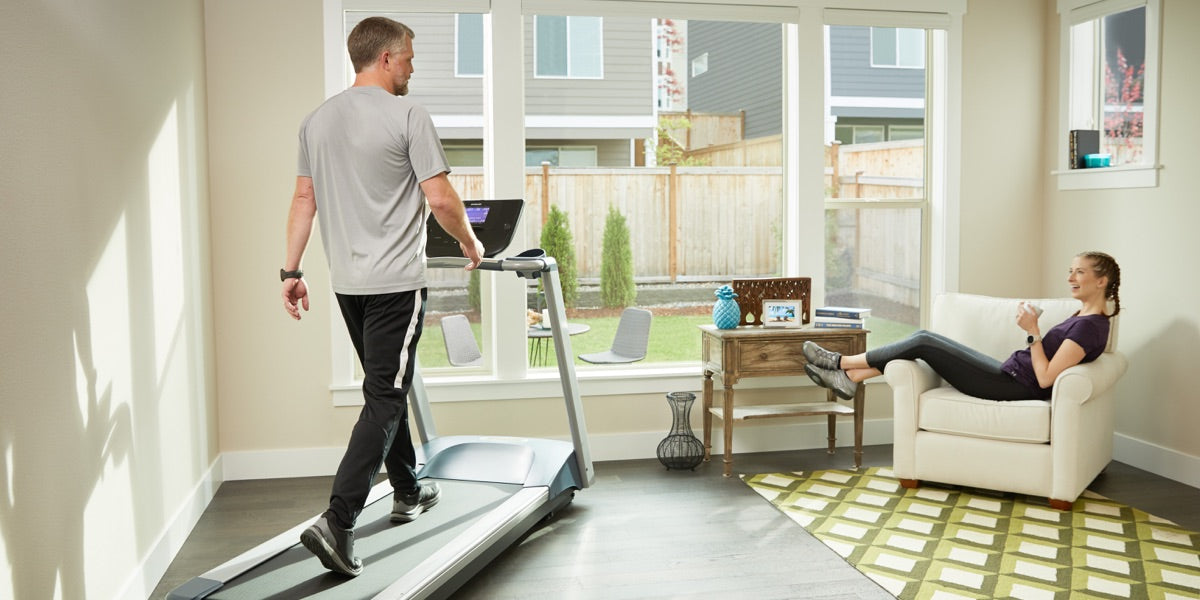People are looking for ways to easily incorporate fitness into their day-to-day lives, resulting in the rise of creating at-home gyms. Not only is there an abundance of online fitness classes available, but it’s hard to beat the convenience of getting a great workout from the comforts of your home. As an added bonus, you don’t have to pack up your gym bag or share your equipment with anyone, and your commute is a lot shorter when your gym is up the hall, down the stairs, or in the garage!
If you find yourself thinking about building a home gym, all you need is a little space. Read on for our home gym ideas and home gym setup tips to inspire you to reach your fitness goals!
Plan Your Home Gym Space
- Choose a comfortable space. Whether it’s a spare bedroom, a corner of your basement, or your garage, you’ll want to choose an area where you will feel comfortable spending time getting your sweat on. Take into account if there are electrical outlets for equipment – and fans, so you can stay cool.
- Give yourself a view. If possible, position your gym near a window so you can look at what’s going on outside. The natural light may also help boost your energy levels! If being by a window is not an option, consider having a TV or tablet nearby to provide some entertainment and motivation.
- Plan enough space for equipment and movement. Take measurements of your available space so you know how much room you’ll have for equipment. Don’t forget to measure the vertical height, as low ceilings could narrow your fitness options. Also, consider incorporating ample space between fitness equipment, as well as some room for stretching and movement, if your area allows for it.
Home Gym Ideas for Small Spaces
Building a Home Gym in Your Garage or Basement
Considerations for Basement Home Gyms
- Ventilation: Does your basement have airflow, or will you feel like you’re sweating in a sauna? Try to find a location near a window so you can get some fresh air circulating.
- Ceiling height: Before purchasing any fitness equipment for your basement, take measurements of your ceiling height. When you increase the incline on a treadmill or elliptical, or swing a kettlebell up high, you’ll want to ensure that you have enough clearance at the top. A ceiling height of 9 feet should comfortably accommodate most exercisers on Precor cardio equipment.
- Access for gym equipment delivery: How easy is it for large pieces of equipment to get into your basement? Consider how wide your door frames are and if the staircase has any curves or height issues that could make moving a piece of big equipment problematic.
- Lack of natural light: Some exercisers thrive on natural light to keep them going, while others are ok without it. Having a TV or projector can make a dark basement brighter and more engaging.
Considerations for Garage Home Gyms
- Space for vehicle: Ensure that you will have enough room in your garage for your car(s) and your fitness equipment, without it feeling crowded, cluttered, or unsafe.
- Insulation: If you find that your garage is freezing in the winter, it’s probably a good idea to add some insulation. Not only will this keep your body temperature up while you’re working out, but it will also protect your equipment from cold temperatures and the elements.
- Cardio equipment electrical requirements: Some cardio equipment requires particular electrical outlets or voltages. The requirements for each piece of Precor cardio equipment are listed on their product pages.
When questions arise, don’t hesitate to contact our online fitness experts or reach out to your local Precor authorized dealer. They’d be happy to discuss your options and help you build out your home gym.



Share:
Cardio Exercise Equipment Buying Guide
Inspiring Spaces To Work Out